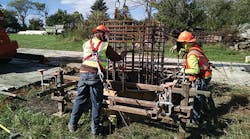Each year, since 2002, EHS Today has named a list of companies we feel exemplify world-class safety leadership. The application for America’s Safest Companies is 14 pages long and asks fairly detailed information, not the least of which is whether your company has experienced a fatality – employee or contractor – in the past five years. We put that question at the end, but perhaps we should move it to the beginning.
I recently received a very irate email from a safety manager who completed the first 12 pages of the application and then was hit with that question. He was very annoyed that we waited until the end to “jump” on him and “ambush” him with a question about fatalities.
I actually said some very bad words out loud as I read his email. Perhaps his bad mood rubbed off on me, but it was all I could do not to email him back and share some of those bad words with him.
This safety manager’s point was that at a company with several thousand or even tens of thousands or hundreds of thousands of workers, odds are good that an employee would suffer a fatal workplace injury. But I know – and you know – that is not the case.
Workers don’t have to die in order to construct a road or a building, cut down a tree, manufacture goods, drive a truck, dig a trench or wire an electrical panel. While a lack of workplace fatalities does not equate to a safe workplace, the existence of fatalities often does correlate with safety failures. That’s why we ask that question.
It seems to me that we would be remiss in naming a company as one of America’s Safest Companies that experiences fatalities every year or almost every year. While there have been two occasions in the past 14 years where companies acknowledged a fatality within that 5-year time frame, the circumstances indicated to us (and OSHA) that the employer was not at fault and that the employer had used that experience to improve safety not only at their own facilities but in their industries as well. In one case, the employer, working with the victim’s family, got a state law changed and possibly saved multiple lives.
Every responsible employer strives for a safe working environment for employees. But many don’t take that next step, to strive for true safety leadership. Perhaps they think that building a world-class safety culture is out of their reach. The safety manager who emailed me apparently thought that a death-free workplace was not achievable.
The ability to create a world-class safety culture exists for every business, in every industry: manufacturing, oil and gas, transportation, chemical, construction, retail, food service, agriculture and recycling, to name a few. In these industries, humans interact closely with heavy machinery and hazardous substances, making safety of paramount importance to the wellbeing of employees and the health of the business.
We often hear talk of excellence in business and safety should be no different. Companies that achieve business excellence also often are considered safety leaders.
What we’ve been hearing from experts is that in order for workplaces to achieve world-class safety, they must look beyond concepts like “zero injuries.” A lack of injuries does not translate to a world-class safety culture.
When we’re judging applications for America’s Safest Companies, we’re looking for employers who believe in transforming the safety culture, using leading indicators to improve safety, strategically integrating EHS into the business model, creating an engaged workforce, maintaining continuous improvement and achieving true safety leadership.
I recently received an email from another safety manager, who asked about “minimum requirements” for achieving America’s Safest Companies status. My knee jerk response was: “Don’t bother applying.” That’s not what I responded, but it’s how I felt. Being the best isn’t about meeting the minimum. It’s about re-envisioning the maximum.
One of my favorite writers, Kahlil Gibran, wrote this about death: “And when you have reached the mountain top, then you shall begin to climb.”
Not that I’m comparing applying for America’s Safest Companies to death, but…
When you think you have reached the mountaintop of safety, keep climbing. That’s when you know your company deserves to be named one of America’s Safest Companies.





